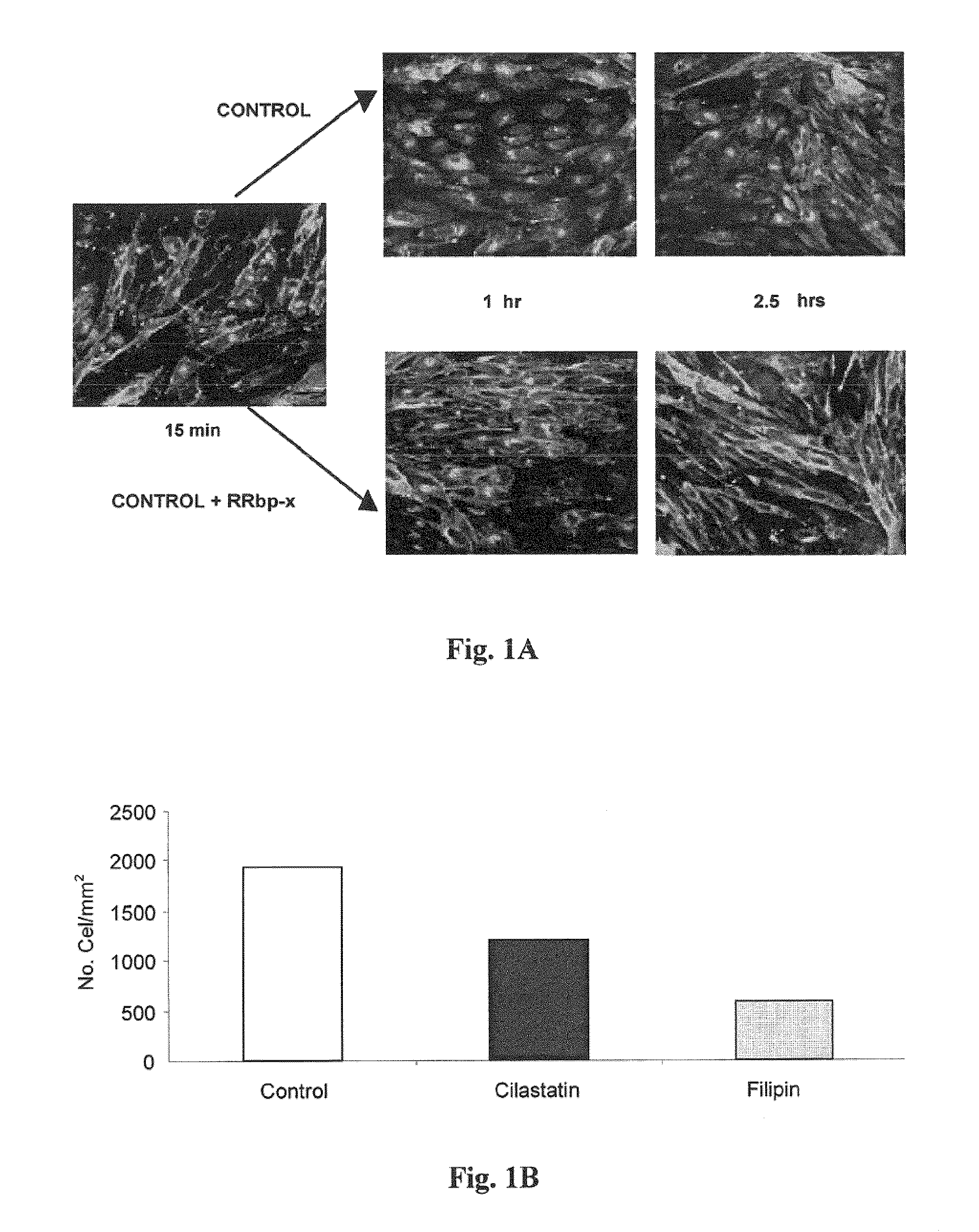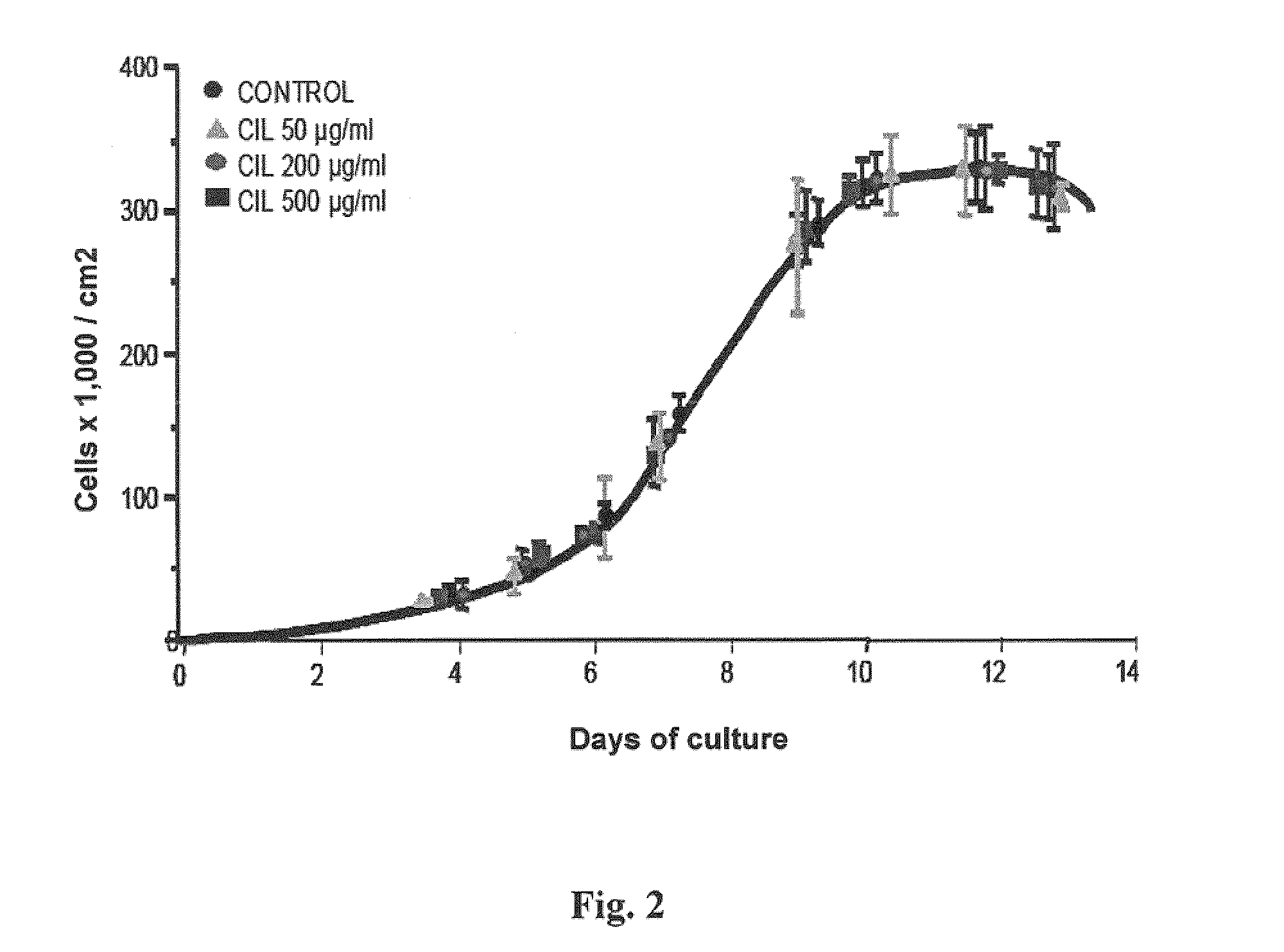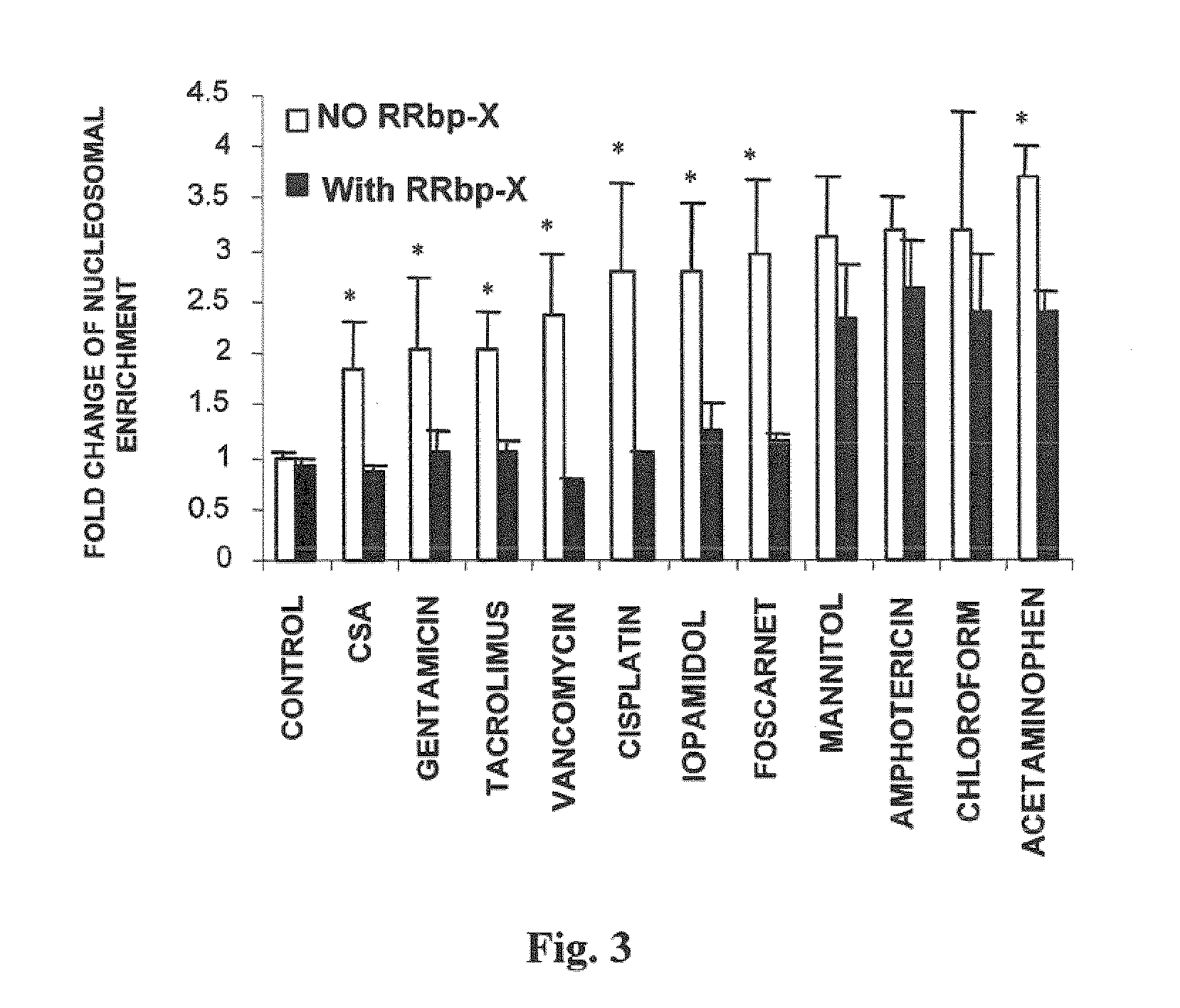Use of cilastatin to reduce nephrotatoxicity of various compounds
a technology of cilastatin and nephrotoxicity, which is applied in the direction of antinoxious agents, drug compositions, halogenated hydrocarbon active ingredients, etc., can solve the problems of limiting its use for the treatment of systemic infections, reducing renal function impairment in rats, and unable to clearly attribute the effect of one or the other drugs
- Summary
- Abstract
- Description
- Claims
- Application Information
AI Technical Summary
Benefits of technology
Problems solved by technology
Method used
Image
Examples
example 1
Reduction of Internalization of Cholesterol Rafts by Cilastatin Interaction with DHP-I
[0160]This test was conducted to show whether cilastatin, through its interaction with DHP-I, anchored to cholesterol rafts (CRs) by a GPI group, could block transport through CRs or interfere with the CR-dependent endocytic pathway.
[0161]For this, caveolae were identified on cells of pig proximal tubular epithelium in primary culture obtained as described above. One of the proteins in the caveola, the cholera toxin B receptor, was used for this purpose. By adding fluorescent toxin B, labeled with a fluorophore (FITC), caveolae are labeled and their fate over time may be followed using confocal microscopy.
[0162]The results obtained are shown in FIG. 1A. At 15 minutes, fluorescent staining was seen along all cell membranes, regardless of treatment.
[0163]Evolution of fluorescence in the absence of cilastatin may be seen in the upper part of the image: after one hour, fluorescence starts to accumulate...
example 2
Safety of Cilastatin
[0166]Some of the early studies on cilastatin prior to its marketing stated that cilastatin, at a dose of 1 g / kg / day, could cause sloughing of tubular endothelium as a sign of renal toxicity (Sack 1985).
[0167]To verify this, an in vitro study was conducted on primary cultures of proximal tubular cells (PTCs) incubated in the presence of increasing cilastatin doses for a total of 14 days. Cultured cells were counted as previously discussed in the section “Cell growth dynamics”. Results arc shown in FIG. 2, where the different cilastatin concentrations used are given.
[0168]No significant effect was seen upon growth dynamics, cell confluence, or monolayer morphology. Concentrations used were up to almost 10 times the plasma concentrations reached in vivo.
example 3
Cilastatin Abolishes or Reduces the Damage Caused to the Proximal Tubule by the Main Nephrotoxics
[0169]3.1.—Cilastatin Prevents or Reduces Cell Apoptosis
[0170]During apoptosis, endogenous endonucleases break down DNA into oligonucleosomes which pass to the cytoplasm, where they stay for several hours before becoming part of the blebs or apoptotic corpuscles. Occurrence of these oligonucleosomes may be interpreted as a manifestation of the apoptotic process.
[0171]To assess the protection provided by cilastatin against nephrotoxicity caused by different nephrotoxics, the above described “nucleosomal enrichment” methodology was used, quantifying appearance of DNA fragments in the cytosol as a manifestation of the apoptotic process.
[0172]Primary cultures of proximal tubular cells were incubated against a battery of 11 nephrotoxic drugs: cyclosporin A (immunosuppressant), gentamicin (aminoglycoside antibiotic), tacrolimus (FK506) (immunosuppressant macrolide), vancomycin (glycopeptide an...
PUM
| Property | Measurement | Unit |
|---|---|---|
| molecular weight | aaaaa | aaaaa |
| molecular weight | aaaaa | aaaaa |
| molecular weight | aaaaa | aaaaa |
Abstract
Description
Claims
Application Information
 Login to View More
Login to View More - R&D
- Intellectual Property
- Life Sciences
- Materials
- Tech Scout
- Unparalleled Data Quality
- Higher Quality Content
- 60% Fewer Hallucinations
Browse by: Latest US Patents, China's latest patents, Technical Efficacy Thesaurus, Application Domain, Technology Topic, Popular Technical Reports.
© 2025 PatSnap. All rights reserved.Legal|Privacy policy|Modern Slavery Act Transparency Statement|Sitemap|About US| Contact US: help@patsnap.com



